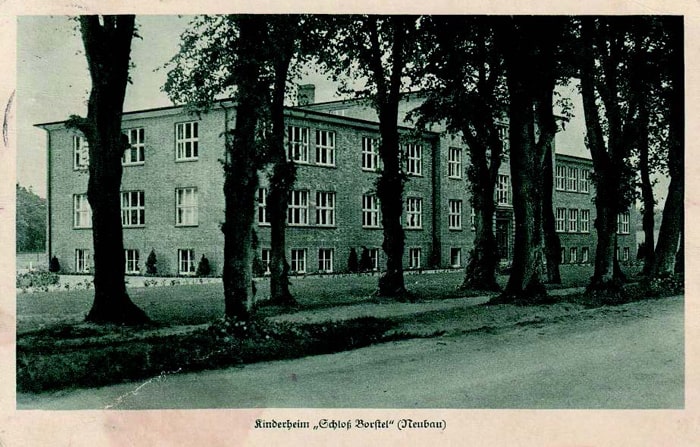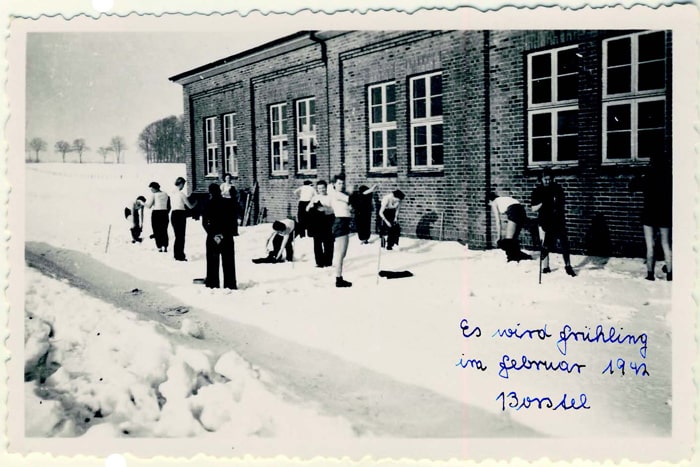The margarine manufacturer Friedrich Bölck, who acquired Borstel in 1930, has a new recreation home built on the road to Bad Oldesloe for his concept of children's recreation for his customers from all over the Reich. A new gymnasium is also built next to this accommodation building.

After the German Reich takes over the Borstel facility and establishes a school for the Female Reich Labor Service (RAD), the building is used as a camp school.
After the end of the war, the premises initially serve as a British military hospital before being used as a tuberculosis hospital from 1947. In the 1950s, the building was extended and a new hospital hall was added.
In 1968, a new medical clinic was built on the northern part of the campus and the entire medical infrastructure moved.

Completely renovated, this building has served as a residential wing for employees of the research center since 1975. And this is used with pleasure: The lively scientific atmosphere, excellent research conditions, work-life balance and cutting-edge technology make the Research Center Borstel, Leibniz Lung Center a sought-after partner and popular employer both nationally and internationally.

Many visiting scientists from all over the world find a new home here during their research stay. And the budding biology laboratory assistants are also happy to take advantage of this offer to live inexpensively and in the direct vicinity of their place of training.
Der Margarinefabrikant Friedrich Bölck, der Borstel 1930 erworben hat, lässt für sein Konzept der Kindererholung für seine Kunden aus dem ganzen Reichsgebiet ein neues Erholungsheim an der Straßenverbindung nach Bad Oldesloe errichten. Benachbart zu diesem Unterkunftsgebäude wird ebenfalls eine Turnhalle neu gebaut.

Nach Übernahme der Anlage Borstel durch das Deutsche Reich und Einrichtung einer Schule für den Weiblichen Reichsarbeitdienst RAD wird das Gebäude als Lagerschule genutzt.
Nach Kriegsende dienen die Räumlichkeiten zunächst als britisches Lazarett bevor sie ab 1947 als Tuberkulosekrankenhaus genutzt werden. Dafür wird in den 1950er Jahren aufgestockt und eine neue Liegehalle angebaut.
Im Jahr 1968 wurde auf dem nördlichen Teil des Campus eine neue Medizinische Klinik erbaut und die gesamte medizinische Infrastruktur zog um.

Grundsaniert dient dieses Gebäude seit 1975 als Wohntrakt für Mitarbeiterinnen und Mitarbeiter des Forschungszentrums. Und dies wird gerne genutzt: Die lebendige Wissenschaftsatmosphäre, exzellente Forschungsbedingungen, die Vereinbarkeit von Beruf & Familie sowie Spitzentechnologie machen das Forschungszentrum Borstel, Leibniz Lungenzentrum national und international zum gefragten Partner und beliebten Arbeitgeber.

Viele Gastwissenschaftlerinnen und Gastwissenschaftler aus der ganzen Welt finden hier während ihres Forschungsaufenthaltes ein neues Zuhause. Und auch die angehenden Biologielaborantinnen und Biologielaboranten nutzen dieses Angebot gerne, um kostengünstig und in direkter Nähe ihres Ausbildungsplatzes zu wohnen.